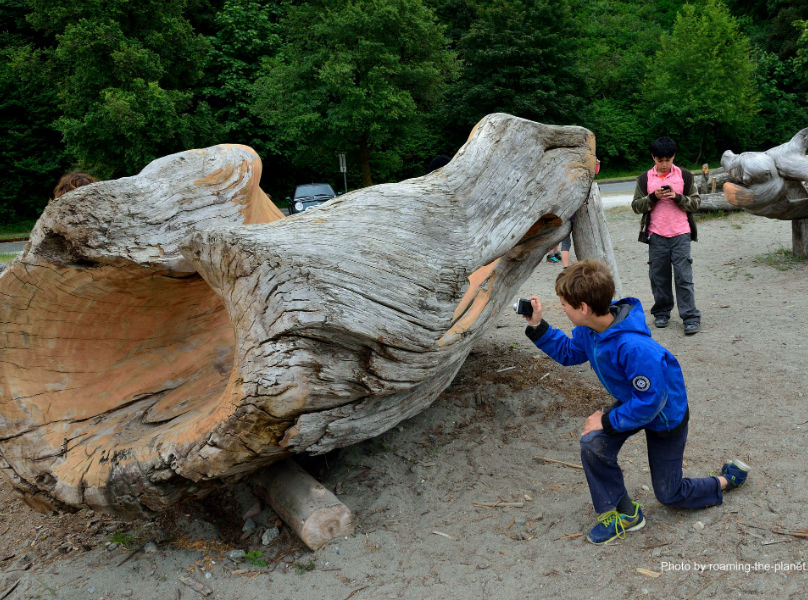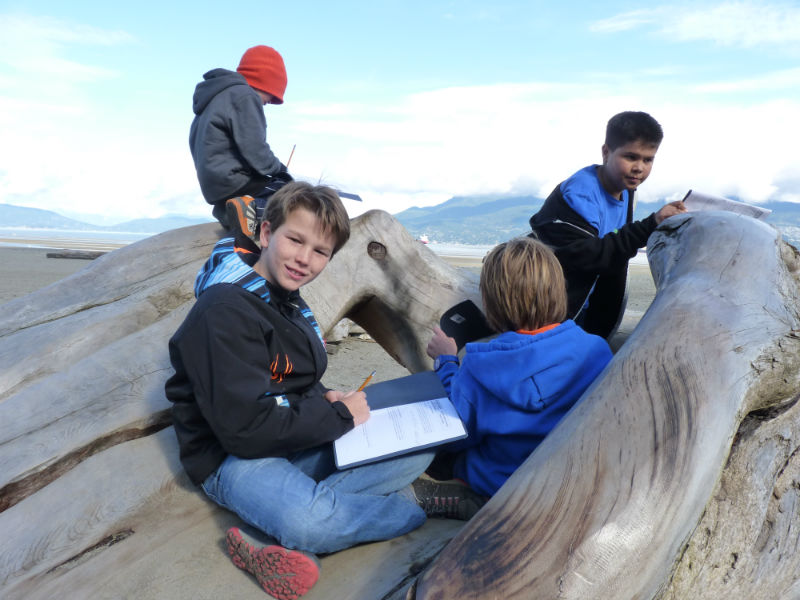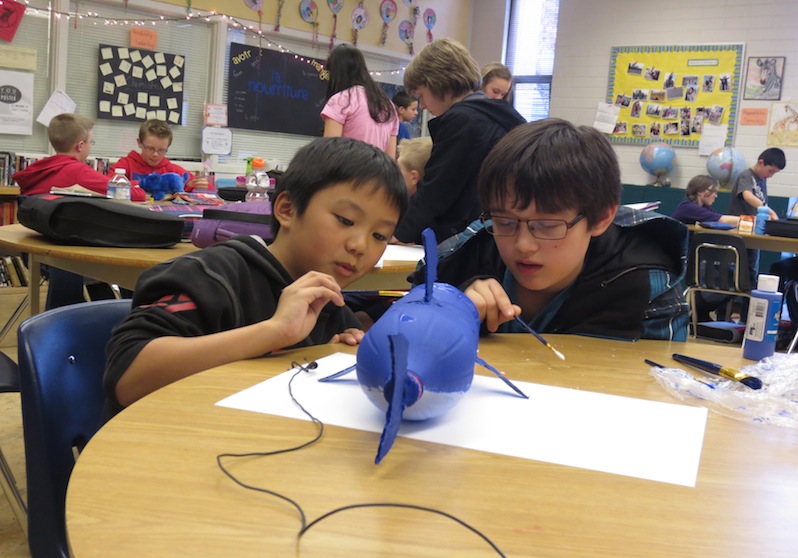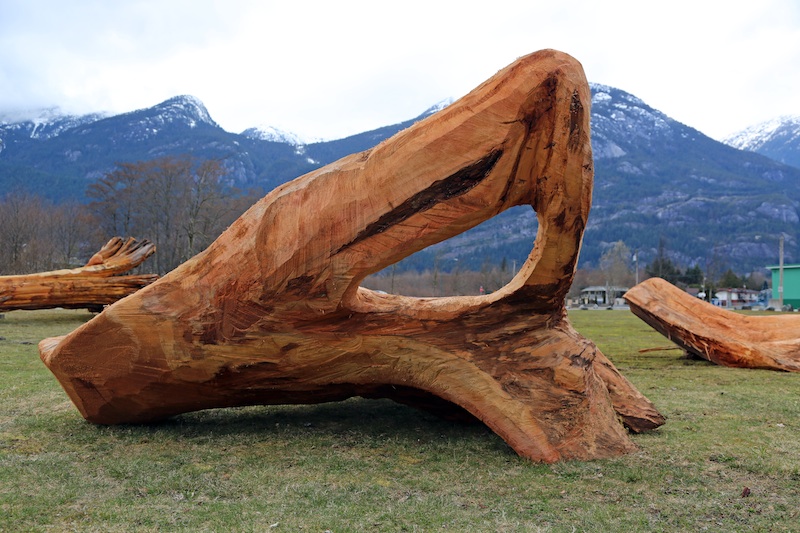Thinking about the Historical Significance of an Artist’s Life & Work
Social Studies - Grade 4
This unit of inquiry is not a recipe book but rather a launchpad to inspire new BIG IDEAS. We encourage you to use and/or modify one, or several of the BIG IDEAS below. Adapt it to the grade/ ability level of your students.
Enduring Understanding
The actions and lives of individuals often reflect global issues and processes and have the ability to effect change at both the community and international level.
Guiding Questions
What might be the historical significance of Hugo França’s life and work?
How might França’s work be considered historically significant or not to different groups with different perspectives at different times in history?
How does França’s life and artwork connect to, and challenge us reflect upon global issues such as land use, natural resources, human rights, sustainability, and the importance of Indigenous ways of living?
How can artwork change the location of where it’s situated? What impact do França’s installations have on their locations?
Mind Opening
Choose or devise practices to encourage students to be open to new experiences and ways of thinking in your classroom. For example, the MindUP in-school program.
Discovery & Inspiration:
Launch the Project
• Introduce the Theme: Present the Enduring Understanding and Guiding Questions using vocabulary that is appropriate for your grade level.
• About Vancouver Biennale: Play a short video.
• Create Project Space: Brainstorm ideas to make the project theme visual and visible using bulletin boards, and/or a project corner to share relevant materials and inquiry questions and processes.
Reference Resources:
• Introduction to Sculpture and Public Art Unit Plan for information on how art has evolved over time and the unique experience sculptures and/or public art brings.
• Vancouver Biennale 2014-2016 Exhibition Theme: Open Borders / Crossroads Vancouver
• Public Furniture | Urban Tree – Vancouver and Public Furniture | Urban Tree – Squamish and Public Furniture | Urban Tree – New Westminster (Hugo Franca, Brazil)
• About Artist and Artwork (PDF)
Learning to Learn:
Art Inquiry
• Make a visit to one of the Public Furniture|Urban Tree exhibition locations and encourage students to freely explore and interact with the art pieces individually and in groups OR
BIG IDEAS Anywhere educators: View the Public Furniture | Urban Trees – Vancouver Guided Tour Video MUTE ON and encourage students to explore at different angles individually and in groups.
• This Art Inquiry process enables the students to practice observing, describing, interpreting, and sharing visual information and personal experiences.
• Use the Art Inquiry Worksheet (PDF) to guide and capture their ideas and impressions. Customize or create your own Art Inquiry Worksheet as appropriate for your project and class needs.
Shared Insights
• Sharing Art Inquiry Experience: Ask students to share the Art Inquiry Worksheet responses in class.
• View Guided Tour Video: View the Public Furniture | Urban Trees – Vancouver Guided Tour Video again with SOUND ON.
• Significant Aspects of Hugo França’s Life: What are some significant aspects of Hugo França’s life? Using the About Artist and Artwork (PDF), the teacher creates stations detailing França’s life and work. In small groups students rotate through these stations. Topics might include: (1) education and training; (2) lifetime of artwork; (2) materials and processes; (3) beliefs and values. At each station, students answer questions and complete a task. For example, at the station “life’s work” students might plot the artist’s various installations on a map of the world. The locations to date include Porto Alegre, Sao Paulo, Trancoso, Bahia & Rio de Janeiro, Brazil; Saint-Etienne, France; New York City, USA; Squamish & Vancouver, Canada. Encourage students to draw a parallels to their own life and reflect on the countries/cities/communities that they have lived and the significance of each location to them.
Inquiry Challenges
• On Historical Significance: How might we think about historical significance in relationship to an individual’s life and work?
1/ Introduce and inquire into the concept of Historical Significance and view the following video on Historical Significance.
2/ Lead students to investigate historical significance under the following framework:
- Events, people, or developments might have historical significance if they had deep consequences for many people over a long period of time.
- Events, people or developments might have historical significance if they shed light on long lasting or emerging issues in history and modern life.
BUT
- The historical significance of an event, person, or development is constructed in relation to its time and place in history.
AND
- Historical significance varies over time and from group to group (to different groups with different perspectives)
- Remind students that individuals become historically significant when they are connected to a larger story of history be it in the local community, province, stated or world (i.e.: a student who links their grandfather’s life to the larger themes of immigration, war, politics)
3/ Discuss how although the video clip shows how the Ukrainian internment was significant, it ignores the reasons why it was forgotten or left out of history class for so long in the first place — many students may never heard about it in school, for instance. Who decided it was not worth remembering, who brought it back to our attention and encouraged the government to address it a few years ago? As our society changes, we look at history differently and perhaps begin to value histories that were overlooked in past eras when society was different. Perhaps, Canada is more open about accepting and discussing oppression, racism and difficult histories than in past generations. Why do you think this is the case? What does this tell us about the people, places or events that we might label “historically significant” today?
4/ Working in groups, students come up with two public figures who they believe will be most remembered in history, using the Public Figure Significance Worksheet (Word).
5/ Groups share their public figure and the criteria driving their choice.
6/ Teacher distributes Assessing Historical Significance (Word) (to be competed after the last inquiry in this unit) and discuss how Franca’s work might be historically significant or not to different groups with different perspectives.
• Dictatorship and Human Rights: How are human rights at risk in dictatorships? Why was França imprisoned? Are human rights at risk in certain countries today?
1/ Think, Pair, Share Activity What does the term ‘human rights’ mean to you? How do you define ‘human rights’? What do you think your ‘human rights’ are?
2/ Teacher-led discussion/ lecture, detailing França’s incarceration, torture and the form of government in Brazil from 1964-1985.
3/ Groups examine the Universal Declaration of Human Rights and re-define human rights. Ask students how they think França’s incarceration may have affected his life choices and artwork.
4/ Extensions: a/ Are there countries in the world today, which do not abide by the universal Declaration of Human Rights? Why are artists sometimes targets? (Teacher could refer to Ai Weiwei‘s imprisonment in China) b/ Group work: Students look at sections of the Canadian Charter of Rights and Freedoms and discuss whether human rights violations could or do occur in Canada today?
Helpful Resources:
Castle, C. (2000). For Every Child: the rights of the child in words and pictures. Red Fox in association with UNICEF
Smith, D. and Armstrong, S. (2003) If the World Were a Village. A & C Blacky
Morris, N. (2008). Recycling. Laguna Hills: QEB Publishing, Inc.
Wallace, E. (2004). Recycle Every Day! New York: Scholastic.
Geisel, T.S. (1971). The Lorax (Classic Seuss). New York: Random House Books for Young Readers.
Amnesty International (2005). Learning about Human Rights through Citizenship, Amnesty International UK
Duncan, F. & Mullaly, G. British Columbia. Its land, mineral and water resources. Gabriola: Pacific Edge Publishing,
• França’s Connection to Indigeneity: Similarities and Differences between the Pataxo & Haida – How was Hugo França’s life influenced by the Indigenous Pataxo? What similarities exist between the Pataxo of Brazil and the Haida of Canada?
1/ Refer students back to Artist Themes activity from Day 1 and the map of Franca’s life and work.
2/ Teacher-led discussion using the resources below: França’s life with the Indigenous Pataxo and their influence on his artwork.
3/ Group work: ½ the class researches the Haida while the other ½ researches the Pataxo, covering artworks – totem, carving, spiritual symbols, culture, and local life.
4/ Groups pair and share their info.on the chart. Class consolidation: students fill in a Venn diagram documenting similarities and differences between the Haida and Pataxo.
● Pataxo Resources: Indigenous Peoples in Brazil website; International Business Times: Threatened Pataxo Indian Tribe of Brazil Celebrates Supreme Court Decision; Of Languages and Numbers Article: The Pataxo people of Brazil: the recreation of a culture
● Haida Resources: Haida Virtual Museum, Royal BC Museum- Enter the Time Machine and then go to First Nations in BC
• França’s Connection to Indigeneity:
How is does França’s use of wood in his projects around the world reflect his time with the Pataxo? How does his use of wood connect to First Nations communities in BC? Who created the first totem poles in BC? Who continues to create totem poles in BC? What do totem poles tell us about the time and places that they are and were created?
1/ Students View the National Film Board (NFB) documentary entitled Totem: The Return of the G’psgolox Pole. You can view the film in its entirety on the NFB website, here.
2/ Teacher shows selected images of Northwest Coast Totem poles and asks students to work in pairs on KWL Worsheet detailing what they know and want to know about totem poles.
3/ Using the resources below, and the following Totem Pole Summary Worksheet, the teacher introduces and provides more background information on totem poles.
4/ Students then fill out their KWL Worksheets again detailing the new information they have acquired.
5/ Using Jigsaw style cooperative learning groups research one of the six types of totems: 1. Mortuary Poles; 2. Memorial Poles; 3. Heraldic Portal or Family Poles; 4. Potlatch Poles; and 5. Ridicule or Shame Poles.
6/ Groups will report back to the class and students will complete their Type of Totem Charts. Groups then choose on pole and using the concept of Historical Evidence answer the following questions: When was this work produced? What might have been the artist’s purpose in producing this art? Who do you think is the intended audience? What do you think is the intended message? What was going on in the society where this artwork was created that might help us interpret the artwork? How might this context help use understand what life was like for the people in the artwork? What materials has the artist used? Is there special significance to these materials? What symbols or metaphors does the artist use? What might they mean?
Possible extension: Students research a contemporary First Nations totem carver and fill in the final column of their worksheet to explain what the artist’s poles are used for today. Some contemporary carvers include:
Bill Reid (CBC news)
• BC’s Natural Resources & França’s Use of Wood – Human/ Environmental Interaction
How is our life in Canada and British Columbia connected to natural resources? How is Hugo França’s work connected to natural resources and sustainability?
1/ Teacher develops a Concept Attainment Activity, to introduce students to renewable and non-renewable resources.
2/ Teacher-led discussion: What natural resource does Franca use in his work? Why does he use wood? Where does he find the wood for his work? Why does he only use wood from the forest floor?
3/ Introduce the Sustainable Design Awards Students might bringing in items or images of items that are sustainable and non-sustainable for follow up activity that around the generation of a sustainable product.
• BC’s Natural Resources & França’s Use of Wood: Deforestation – Human/ Environmental Interaction
How do individual choices impact the environment?
1/ Facilitate discussion on the artist’s choice of cutting equipment and the dual meaning (destruction or creation).
2/ Students brainstorms items made from trees: one essential to living/the other that we can do without.
3/ Read The Lorax (ebook).
4/ Group work: half the groups are assigned to defend the Onceler and half to defend the Lorax.
5/ Host a debate defending Onceler and Lorax.
6/ Debrief: Groups take turns sharing sides.
7/ Teacher-led discussion around the need to strike a balance between satisfying needs/desires, using trees to make things like the Onceler does and protecting the environment. Possible Questions: Would we all just stop using trees altogether? What would a logical solution be?
8/ Extension: Students write a solution that would satisfy both the Onceler and the Lorax or write a different ending to the book.
• BC’s Natural Resources & França’s Use of Wood: Reforestation – How is wood a renewable resource?
1/ Teacher-led discussion to determine what students already know about forestry. Who owns the forestland? Who manages it? Who cuts trees? Who decides how much to cut? What is the cost of cutting timber? Is there a limit?
2/ Students view The Miracle Resource and record their reflections on their journal.
3/ Teacher-led discussion/ lecture on the ownership of forest land, logging operation and practice.
4/ Siviculture: teacher -led discussion or student driven research using the resources below.
BC Forest Information Info, videos and fact pages under “Resources”
Canadian Institute of Forestry
Canadian Model Forest Network – View the ‘Model Forests in Canada’ map and the latest video on research done in these forests.
Columbia Mountains Institute of Applied Ecology Secondary level materials in the “National Park Feature” articles.
Council of Forest Industries Forest Teaching Resources: featuring teaching kits such as BC’s Mountain Pine Beetle (Elem. and Sec.), Climate Change and Our Forests (Elem. and Sec.) BC Forest Products for the World (Sec.).
Georgia-Pacific Wildlife in the forest, water, energy, paper recycling, the forester’s job… with lessons & activities in a well-designed format.
Royal BC Museum – Enter the Time Machine and then go to BC Resource Development- Forestry industry
• Continuity & Change in the Locations where França’s work is Installed: Curating with a Podcast (from a phone) – How can artwork change the location where it’s situated? What impact do França’s installations have on their locations?
1/ Ask students to select one of the artist exhibiting locations (Vancouver, New Westminster and Squamish).
2/ Using Google earth & current photographs compare the locations before the installations after.
3/ Visit the piece and collect images of how people are interacting with it.
4/ Record a phonecast with iPadio * that answers the following questions: How has França’s work changed the location where it is situated? What are the physical and social effects of the installation on its location? Do you think the changes are positive or negative. What if the installation were removed? How would this change the site? Students make a recording about it like they are a news reporters, record other student’s or visitor reactions to the installation as part of the phone cast. *iPadio lets you record a podcast right from your phone with no additional equipment. You can attach that pictures to your recording.
• Thinking About the Historical Significance of an Artist’s Life & Work –
1/ In small groups students complete to the supporting document: Assessing Historical Significance (Word).
2/ Groups must then answer the following questions: How might França’s work might be considered historically significant or not? How might França’s work might be considered historically significant to different groups with different perspectives? How might França’s work might be considered historically significant to at different time periods in history? How might a piece of artwork change in significance over time? How might a piece of artwork be considered historically significant to one culture but not another? Encourage students to value ideas and art even if they may not label them historically significant.
3/ Discuss answers as a class.
Student Creation & Taking Actions
Field Trip: Sketch, Post and Tag – Students use a sketching app like Paper which is known for both its simplicity as well as its sharing functionality which some call the Instagram of sketching. Built in tools let you share on Twitter, Tumblr, and Facebook and connect with others who sketch using the #MadeWithPaper hashtag. You can also submit a creation to the site. Pick another hashtag for your field trip to França’s work s use it for capturing all the cool things you find. You can use the hashtag for Twitter, Instagram, Vine, Facebook, and Google plus, then collect them all in one place using a service called Tagboard. This is a fun way to document your trip using your favorite social media platforms. You can see an example of what that looks like here.
Reflection
• Teacher and students can reflect on their entire learning process by revisiting the Enduring Understanding and Guiding Questions.
• How did the unit of study open inquiry, create cross–curricular learning opportunities and/or apply learning to real life situations? Has this unit of inquiry changed your opinions, values and worldview? In what ways, if any, has it helped you grow as a learner?
Ideas for Cross-Curricular Access
• Language Arts: Expressing a Persuasive Argument-
Students write and editorial that considers and discusses the following: How might França’s work might be considered historically significant or not? How might França’s work might be considered historically significant to different groups with different perspectives? How might França’s work might be considered historically significant to at different time periods in history? How might a piece of artwork change in significance over time? How might a piece of artwork be considered historically significant to one culture but not another?
Perhaps one of the best and most widely recognized examples of persuasive writing in action is the classic editorial. 1/ Inquire into what students know: What is an editorial? Have you ever read one? What is the purpose of an editorial? 2/ Teacher may show NY Times editorial page editor Andrew Rosenthal’s Brief Video and give students his 7 Pointers Summary (Word) on writing editorials. 3/ Teacher selects an editorial to read, copy and distribute. 4/ Teacher might read the editorial aloud and students complete Part 1 of the Persuasive Writing/ Editorial- Format Worksheet (PDF) in pairs. 5/ Students use Part II of the Persuasive Writing/ Editorial- Format Worksheet (PDF) as a guide to draft their own editorials on França. 6/ Drafts are peer edited to revise ideas, organization, voice, word, choice and sentence fluency. 7/ Editorials may be read aloud and/ or posted to classroom blog. 8/ Students may comment on the editorials or responses to these editorials on the blog.
• Fine Arts: Mixed Media – Provide students with a mix of sustainable and non-sustainable art materials for use in a mixed media art creation on a natural resources theme. Ask them to identify what material is sustainable and to explain their reasons of material choices.
Credits
Written by: Stephanie Anderson Redmond, B.A.; B.Ed; M. Ed; Ph.D. Student, Department of Curriculum and Pedagogy, UBC
©2014 Vancouver Biennale




